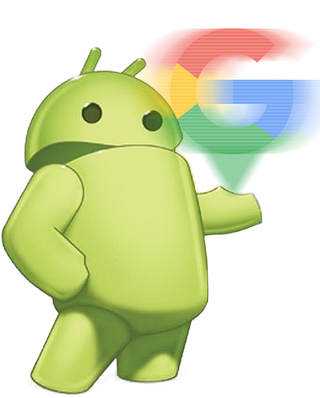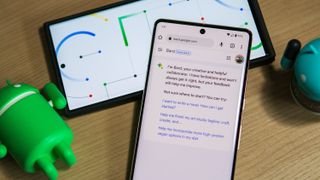Beyond the Alphabet

Beyond the Alphabet is a weekly column that focuses on the tech world both inside and out of the confines of Mountain View.
I was recently asked to give some reasons why someone might want to move from iOS to Android, under the pretense that this hypothetical person hadn’t used Android in over 10 years. After sitting and thinking about it for a little while, I provided my responses, but I also came away with a burning question — Is AI really the last frontier?
It’s a question that’s been rattling around in my head for the better part of the past year, as I’ve watched Google, Samsung, Apple, OnePlus, and others, try to find the right balance. OpenAI’s ChatGPT is really to blame after it exploded onto the scene back in late 2022. It became so popular so quickly that it forced Google’s hand to the point that Gemini was originally called Bard. Like, for months, before making the correct decision to rebrand it.

At the same time, Apple threw in the towel and just integrated ChatGPT into the iPhone, and it still doesn’t do anything to make Siri any better. Samsung’s partnership with Google is paying off, as it is leaning heavily on Gemini for its Galaxy AI integrations. Even OnePlus got in the game, also relying on a combination of its own in-house developed AI models, along with Gemini Nano on the likes of the OnePlus 13.
All of this sounds great, truly. But what can possibly be next?
There’s not much else that can be done in the way of design innovation. We already have flippable clamshells, book-style foldables, and even bi-folds that everyone is calling tri-folds. And while rollable phones haven’t really hit the market yet, they might not be far off, as Lenovo announced a rollable laptop that’s actually being released later this year.

Android is no longer playing catchup to iOS, at least in most regards, and one could even argue that Android is the better platform for everyone. Do you want to tinker? Use Android. Want to keep things simple? Get a Pixel. Looking to replicate the Apple ecosystem? Look no further than Samsung.
While I could definitely sit here and nitpick about things on both iOS and Android, that’s kind of the point. They’re only nitpicks. The landscape is nothing like it used to be, as there’s quite a bit of feature parity between the two platforms. No, it’s not synchronous, but the days of not being able to perform even the most basic of tasks on one and not the other have disappeared from the rearview mirror.

So what can possibly be next? I honestly don’t think the answer actually lies within smartphones. If I were to make a non-educated guess, the “Next Big Thing” wouldn’t actually have anything to do with a smartphone. I think we’re heading in a completely different direction, and the most likely end result is going to be a wearable like Meta’s Ray Ban Smart Glasses.
Maybe it won’t be those specifically, but it has to be something in that ballpark. At the same time, I don’t think it will be virtual reality, at least not in our day-to-day lives. Maybe VR overtakes console gaming or something, but seeing how popular handhelds are becoming, I doubt even that happens.
As pointed out by Michael Hicks, Android Central’s senior editor of Wearables & AR/VR, there are plenty of potential problems that will need to be remedied with various Android XR headsets when they finally hit the market. These are similar issues to the ones that continue to affect smartwatches, such as “battery life, comfortable and stylish designs, accessible controls,” amongst others.
